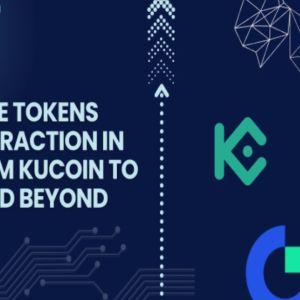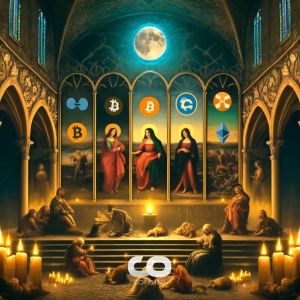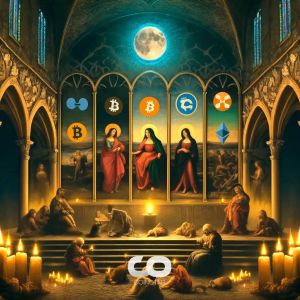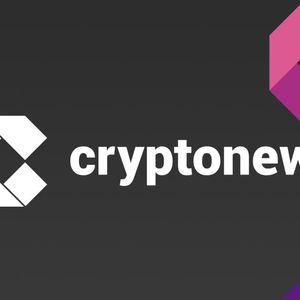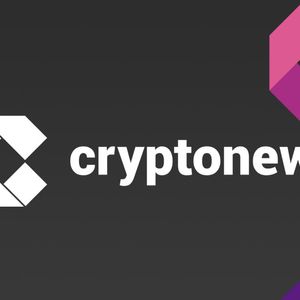Exchange tokens originated as basic tools to reward platform loyalty, providing fee savings, early access to token releases, and occasional staking benefits. Over time, however, those fundamental incentives have fallen short of what today’s investors require. In 2025, the question for token adoption will be “What concrete utility does this token provide?” rather than “Will this asset pump?” Let’s explore it. Real-world use is the new standard Rather than chasing hype cycles, investors now assess tokens using explicit tokenomics, real-world applications, and strong governance frameworks. Tokens that burn or buy back supply to create scarcity, split platform revenue like dividend-paying equities, or provide holders with genuine voting rights to influence exchange decisions are gaining traction. Tokens, on the other hand, offer little more than fee savings and are swiftly losing popularity. As a result, exchange tokens are transitioning from bonus programs to complex financial products that incorporate components of traditional stocks and profit-sharing structures. What investors seek in 2025 As digital asset markets grow, experienced investors are focusing on four essential characteristics when assessing exchange tokens. First, obvious regulatory compliance is unavoidable. Tokens that operate under recognized licenses and adhere to know-your-customer and anti-money laundering regulations considerably reduce legal concerns. Second, sustainable tokenomics, such as programmed burns or buybacks linked to verifiable on-chain measures, help connect long-term holder incentives with platform performance. Third, genuine governance tools that allow token holders to vote on platform roadmaps, fee structures, and token burn schedules promote community involvement and responsibility. Fourth, cross-protocol utility—whether through bridges to DeFi apps, integration with layer-2 rollups, or collaboration with other blockchain networks—increases demand and liquidity. Exchange tokens that match all of these requirements have the highest chance of prospering despite market fluctuations and regulatory changes. Top exchange tokens gaining traction in 2025 Some long-standing exchange tokens demonstrate how this industry is evolving, each in its own manner. Bitget (BGB) Bitget’s BGB, for example, has established a market niche by focusing on social trading and copy-trading networks throughout Asia. So far, Bitget has burned over 20 million BGB tokens, lowering the supply by over 5%. This, along with its incorporation into both spot and futures markets, has progressively increased BGB’s market share. Gate.io (GT) Gate.io’s GT token has developed a reputation as a sneaky performer. GT increases its practical value by delivering graduated fee discounts to loyal customers and linking to GateChain’s cross-chain bridges, allowing holders to easily shift assets between centralized services and DeFi platforms. KuCoin (KCS) KuCoin’s (KCS) uses a more direct revenue-sharing model. Every day, KuCoin returns fifty percent of its trading-fee profits to KCS holders, a process that has disbursed well over one hundred twenty million dollars in the last year. Quarterly burning linked to platform earnings increases scarcity and community confidence. HTX (HT) HTX’s HT token has been more volatile, but it remains important because of aggressive burn announcements and an increased push into growing regions such as Latin America and Southeast Asia. HT holders now benefit from localized staking pools, occasional NFT drops, and on-chain lottery events designed to rekindle interest and engagement. Each of these tokens represents progress, from basic loyalty rewards to more complicated, financial-like arrangements. However, despite these advancements, only a handful of projects successfully connect traditional financial infrastructure with the decentralized potential of blockchain. That is where MBG hopes to lead. MBG: Combining traditional finance and crypto MBG combines traditional finance and cryptocurrency. Among exchange tokens, MBG stands out for its unique combination of traditional financial infrastructure and blockchain innovation. MBG is backed by MultiBank Group , an organization that processed over $4.5 trillion in trade volume in 2024, giving it a base that few other coins have. MultiBank Group has 17 regulatory licenses from significant jurisdictions, including Dubai’s VARA, Australia’s ASIC, Germany’s BaFin, and Poland’s FIU. This comprehensive compliance network provides the coin with unparalleled legal security for both retail and institutional investors. MBG’s inexpensive design enhances its attractiveness. The platform reserves up to half of its token supply for activity-based buybacks and burns, ensuring that the supply decreases as the platform grows. Holders additionally get monthly distributions of platform income, resulting in an annualized return of 4 to 6 percent. Beyond financial advantages, MBG provides token holders with early access to certain Initial Exchange Offerings and seamlessly interacts with MultiBank’s social-trading environment, allowing users to imitate expert trading methods at preferential rates. By combining fee savings, income, governance, and social trading, MBG delivers a full value offering based on both TradFi rigor and DeFi flexibility. Final word: Creating tokens that last The future of exchange tokens will not be determined by flashy marketing campaigns or short-term reward schemes. Instead, it will rely on confidence built via true benefit, enforceable compliance, and long-term tokenomics. Tokens that embrace these ideas will not only survive the next market collapse but will emerge as key assets in the expanding crypto ecosystem. In 2025, MBG sets a new norm by demonstrating how institutional rigor and blockchain innovation can coexist to produce long-term value. For investors looking for more than just buzz, concentrating on long-term tokens is the best course of action.



